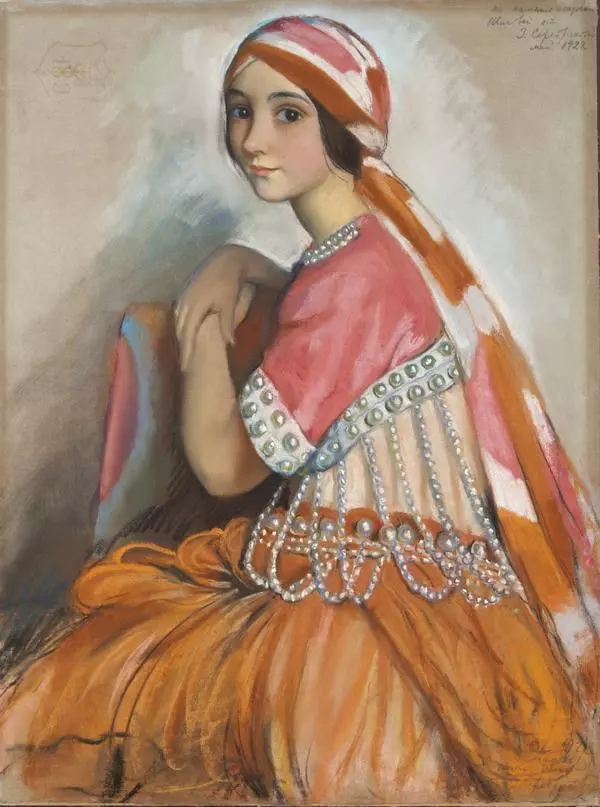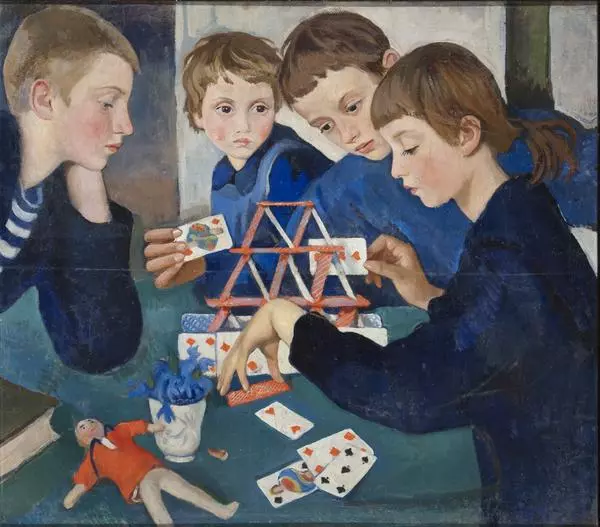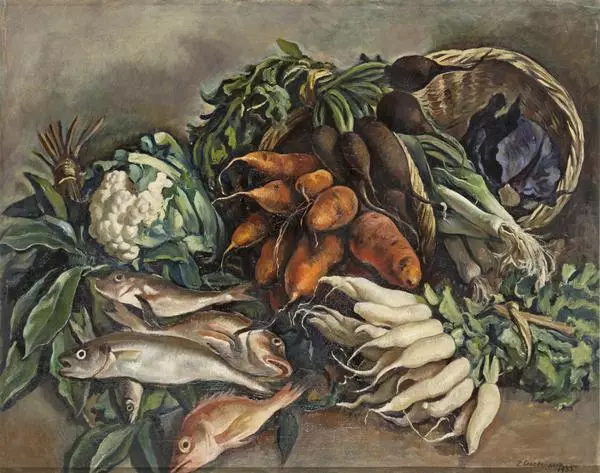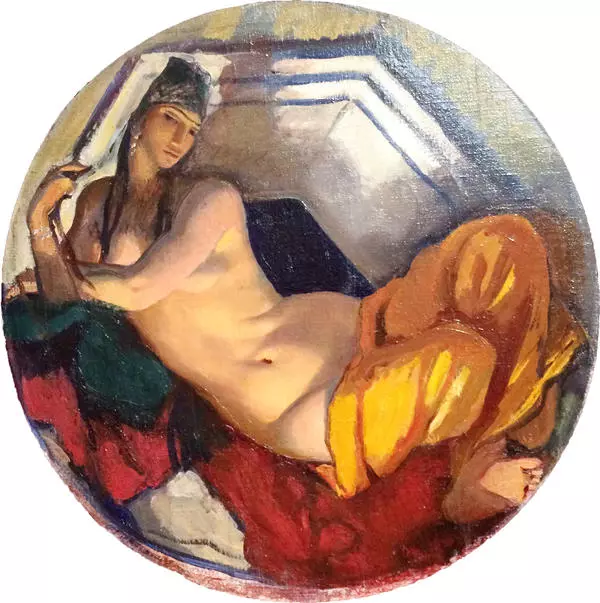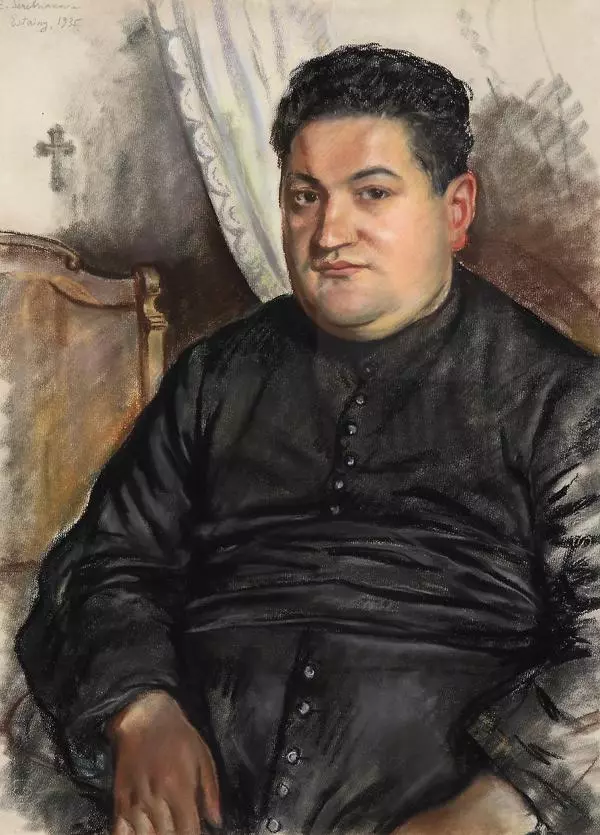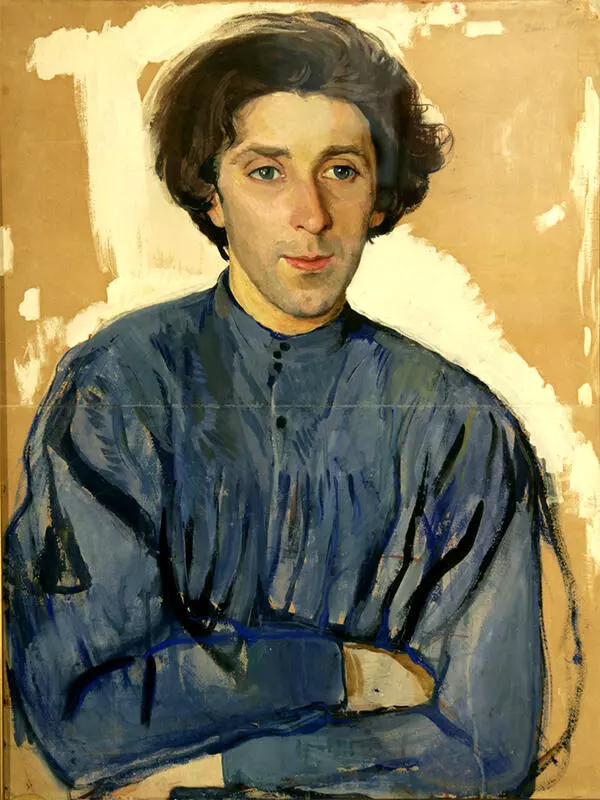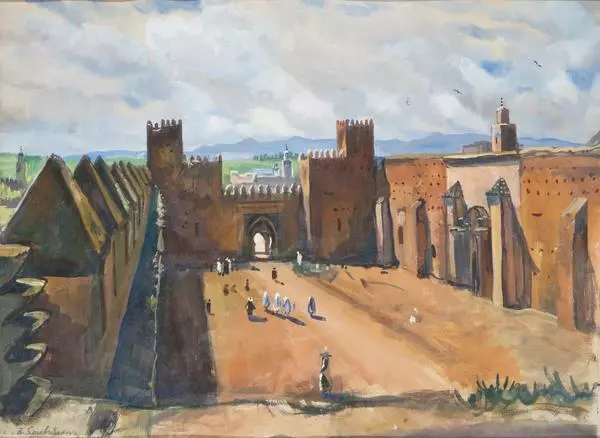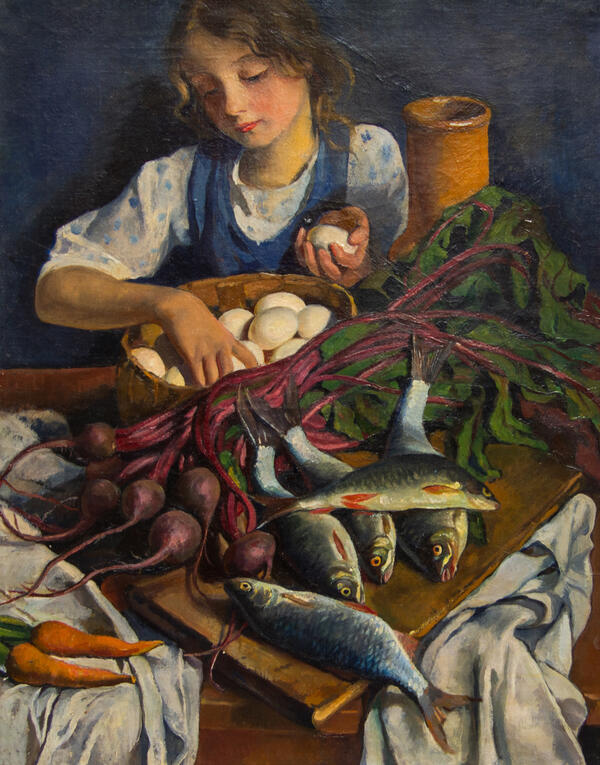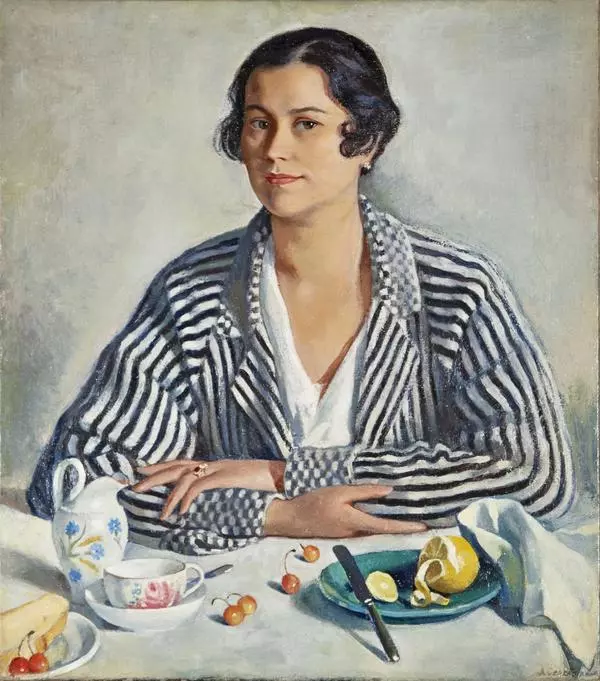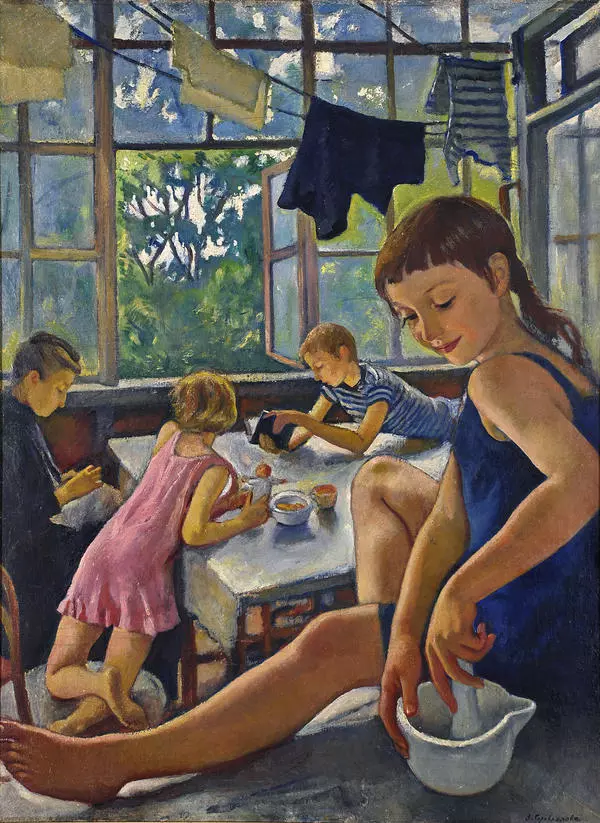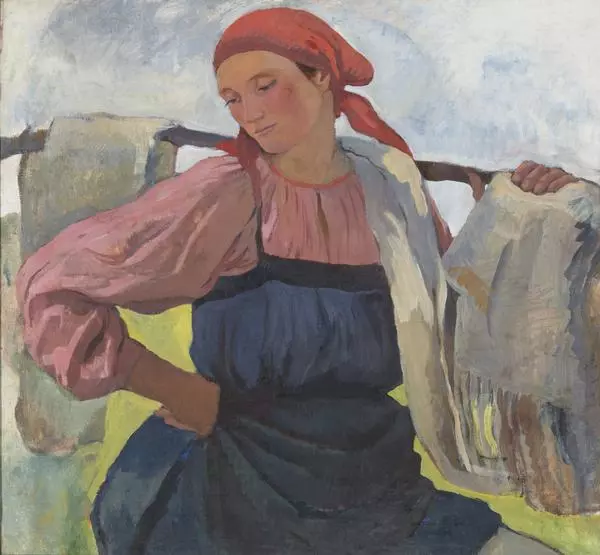Zinaida Serebryakova was born in 1884 in the Kursk province into a family closely involved with arts. Her father Evgeny Lancerai was a renowned sculpture, her mother Ekaterina Lancerai worked as a graphic artist in her youth, and her grandfather, Nicholas Benois achieved fame as an architect. Having received excellent education in Russia and France Zinaida Serebryakova joined the World of Art, a major artistic movement at the turn of the 20th century. Serebryakova became one of the first Russian women to play a prominent role in the art history.
All her life, the artist recurrently turned to her favorite genre, self-portrait. Her self-portraits depicted a changing personality: in the early 20th century she painted herself as an easy-going and joyous person without a care in the world; in her later works Serebryakova appears a wise and self-composed woman who has known motherly love. The inscription on the backside dates the painting July — August, 1921. She presented the painting at the exhibition held by the Artists’ Aid Society which donated it to the Rybinsk museum in November of the same year.
Serebryakova painted herself with her two daughters: Tanya hugs her from the right side and she herself holds her hand on Katya’s shoulder. The composition is clear and simple: three half-figures take up nearly full space of the canvas and are inserted in a triangle. A certain fragmentariness of the composition — the girls’ figures are cut off by the frame — is not in conflict with the sincere feeling of the daughters nestling against their mother. Their gestures set a gentle rhythmic tone: the repeated movements of their arms match the shapes of their bodies and the folds of their clothes adding to our perception of spiritual fulfillment of the personages virtually radiating the love of life.
The color scheme of this self-portrait is based on a combination of cold and warm colors. The loud blue color of the generalized clothing and background highlights the gentleness and warmth of the peach-colored skin of their faces. The faces are painted in several layers with visible brushstroke texture which focuses the attention of the viewer on their soulful and elated expressions.
Nine-year-old Tanya and eight-year-old Katya standing next to their mother, like her sons Sasha and Zhenya were Serebryakova’s usual models. She made multiple sketches of them starting from the twelfth day of their births to the time they were six weeks, then six months. As they were growing she made drawings of them as toddlers — the artist never stopped studying her children’s bodies, facial expressions, and gestures. Some of the sketches were subsequently developed into finished paintings.
All her life, the artist recurrently turned to her favorite genre, self-portrait. Her self-portraits depicted a changing personality: in the early 20th century she painted herself as an easy-going and joyous person without a care in the world; in her later works Serebryakova appears a wise and self-composed woman who has known motherly love. The inscription on the backside dates the painting July — August, 1921. She presented the painting at the exhibition held by the Artists’ Aid Society which donated it to the Rybinsk museum in November of the same year.
Serebryakova painted herself with her two daughters: Tanya hugs her from the right side and she herself holds her hand on Katya’s shoulder. The composition is clear and simple: three half-figures take up nearly full space of the canvas and are inserted in a triangle. A certain fragmentariness of the composition — the girls’ figures are cut off by the frame — is not in conflict with the sincere feeling of the daughters nestling against their mother. Their gestures set a gentle rhythmic tone: the repeated movements of their arms match the shapes of their bodies and the folds of their clothes adding to our perception of spiritual fulfillment of the personages virtually radiating the love of life.
The color scheme of this self-portrait is based on a combination of cold and warm colors. The loud blue color of the generalized clothing and background highlights the gentleness and warmth of the peach-colored skin of their faces. The faces are painted in several layers with visible brushstroke texture which focuses the attention of the viewer on their soulful and elated expressions.
Nine-year-old Tanya and eight-year-old Katya standing next to their mother, like her sons Sasha and Zhenya were Serebryakova’s usual models. She made multiple sketches of them starting from the twelfth day of their births to the time they were six weeks, then six months. As they were growing she made drawings of them as toddlers — the artist never stopped studying her children’s bodies, facial expressions, and gestures. Some of the sketches were subsequently developed into finished paintings.




